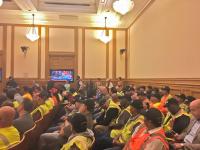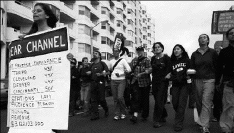The History of Media Alliance – Excerpted from “Remaking Media: The Struggle to Democratize Public Communication”.
Posted by Bob Hackett (Author) and Bill Carroll (Author) on May 27th, 2009
In its 7 January 2002 cover story on media reform, the respected progressive periodical The Nation recognized Media Alliance in San Francisco (now Oakland) as one of several ‘crucial organizations’ for building media democracy in the US.
The seed from which this non-profit media advocacy group sprouted was the post-Watergate generation of journalists, against the backdrop of a high tide of liberal reformism in American politics. The tumult of the Vietnam war era had receded following the withdrawal of US troops, but the movements which it had engendered were impacting the State machinery. Lawmakers and courts were moving forward on environmental protection, reproductive rights, women’s equality and other issues. Buoyed by the liberal zeitgeist but frustrated by the conservative disposition of mainstream media, about 50 journalists began meeting in 1975-6 to socialize and discuss media and political issues. Larry Bensky describes his fellow founding members as journalists, especially freelancers, but also many employed in both corporate and alternative media, people dissatisfied with corporate media coverage of events in the Bay Area (like the Vietnam war and the anti-war movement), and hoping to change that. Continue reading Remaking Media





